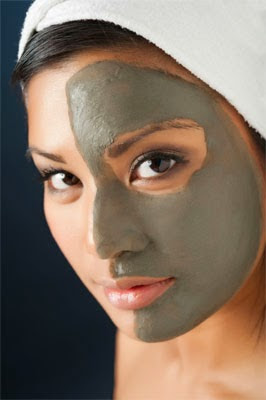SKINCARE TALK WITH BOLA AKINBOADE-BELLO: AVOID TOXIC INGREDIENTS AND CREATE YOUR OWN MASK WITH BENTONITE CLAY
Skin is the
body`s largest organ and one of the primary ways toxins make their way into the
body. Therefore, it`s important to read the labels of skin care products and
learn what to avoid when it comes to ingredients. The marketplace is abundant
with prepared “natural” clay masks. An alternative to buying packaged
clay masks is to (DIY) “do-it-yourself”.
body`s largest organ and one of the primary ways toxins make their way into the
body. Therefore, it`s important to read the labels of skin care products and
learn what to avoid when it comes to ingredients. The marketplace is abundant
with prepared “natural” clay masks. An alternative to buying packaged
clay masks is to (DIY) “do-it-yourself”.
One common,
toxic ingredient in packaged volcanic clay masks is dmdm hydantoin. It is a
preservative and is derived from methanol. It can result in itching, burning,
scaling, hives, and blistering of skin as a result of an immune system
response. Further, it caused cancer when injected into rats.
toxic ingredient in packaged volcanic clay masks is dmdm hydantoin. It is a
preservative and is derived from methanol. It can result in itching, burning,
scaling, hives, and blistering of skin as a result of an immune system
response. Further, it caused cancer when injected into rats.
Another
ingredient in another widely-available clay mask is styrax benzoin extract.
This ingredient is a common allergen that can cause skin irritations, welts and
urinary problems when absorbed through the skin.
ingredient in another widely-available clay mask is styrax benzoin extract.
This ingredient is a common allergen that can cause skin irritations, welts and
urinary problems when absorbed through the skin.
A third
toxic ingredient to lookout for in clay masks is potassium hydroxide, which is
caustic potash. Being extremely corrosive, it can cause skin rash and burning
and can destroy fingernails in concentrations greater than five percent.
toxic ingredient to lookout for in clay masks is potassium hydroxide, which is
caustic potash. Being extremely corrosive, it can cause skin rash and burning
and can destroy fingernails in concentrations greater than five percent.
On the
bright side, there is a natural substance from the earth – calcium bentonite
clay – that can be used to make a non-toxic mask at home. Clay refers to
materials whose particle size is less than 2 micrometers and to a family of
minerals whose chemical compositions and crystal structure are similar. There
are many different types of clay, some more suited to industrial use and others
suited to personal use. Clays in the smectite family are particularly good for
clay masks because they both absorb (draw in) and adsorb (stick to) toxins and
other impurities.
bright side, there is a natural substance from the earth – calcium bentonite
clay – that can be used to make a non-toxic mask at home. Clay refers to
materials whose particle size is less than 2 micrometers and to a family of
minerals whose chemical compositions and crystal structure are similar. There
are many different types of clay, some more suited to industrial use and others
suited to personal use. Clays in the smectite family are particularly good for
clay masks because they both absorb (draw in) and adsorb (stick to) toxins and
other impurities.
Any quality
calcium bentonite clay can be used as the basis of a homemade clay mask. Mix 1
part dry calcium bentonite clay with 3 parts filtered water. Organic apple
cider vinegar or rosewater may be substituted for the filtered water. Blend
well with a wooden spoon till the consistency of sour cream. Let sit 12-24
hours covered. Apply a thin layer to the skin and allow to dry 15-20 minutes.
Rinse off with warm water and moisturize. Since the clay increases circulation
to the area where applied, expect some redness initially. Clay facials may be
done once a week for general cleansing and exfoliation.
calcium bentonite clay can be used as the basis of a homemade clay mask. Mix 1
part dry calcium bentonite clay with 3 parts filtered water. Organic apple
cider vinegar or rosewater may be substituted for the filtered water. Blend
well with a wooden spoon till the consistency of sour cream. Let sit 12-24
hours covered. Apply a thin layer to the skin and allow to dry 15-20 minutes.
Rinse off with warm water and moisturize. Since the clay increases circulation
to the area where applied, expect some redness initially. Clay facials may be
done once a week for general cleansing and exfoliation.
Latest posts by bebeakinboade (see all)
- HOW TO DRESS LIKE PARISIAN WOMEN: ACHIEVING EFFORTLESS CHIC - August 14, 2024
- THE BRAVE ADVENTURE OF JOSH THE GREAT: A FAITH-FILLED JOURNEY OF COURAGE AND FORGIVENESS - August 14, 2024
- FASHION AND BEAUTY ICONS FROM AROUND THE WORLD - July 28, 2024




